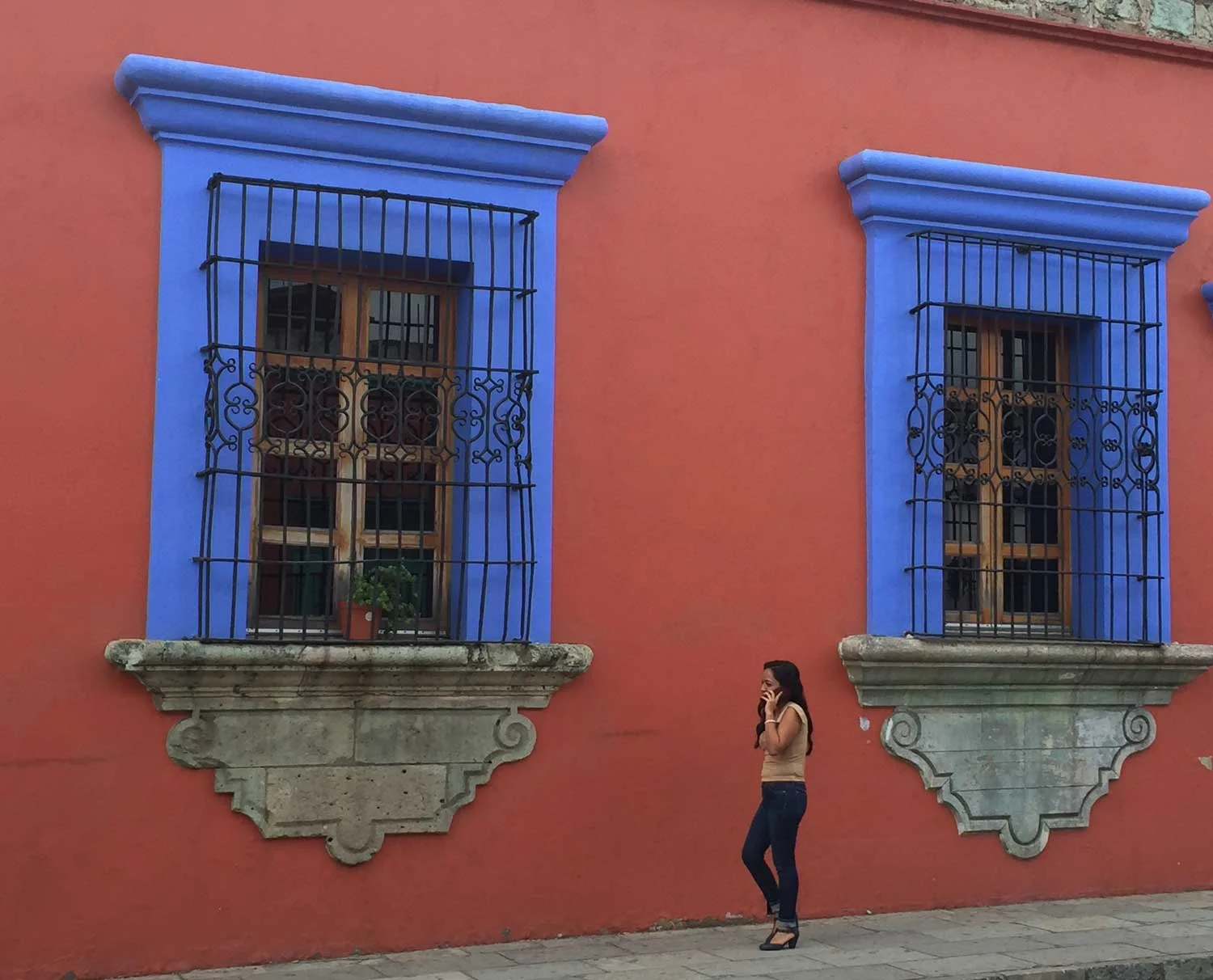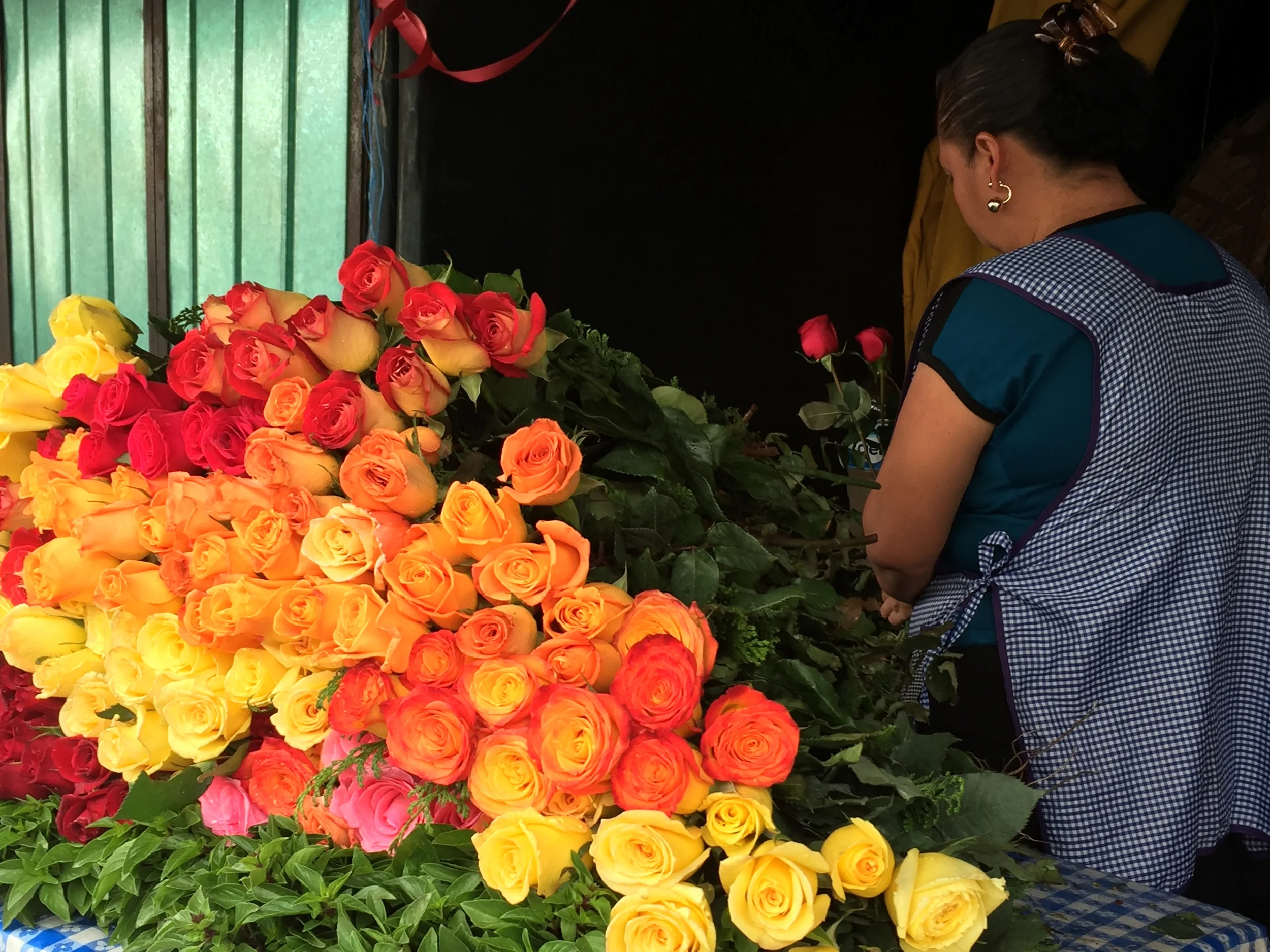Oaxaca Journal
Organo Cacti at oaxaca ethnobotanical garden
This past winter while inching my way along dirt paths in Oaxaca, my eyes were either glued to the sky or suddenly shifting towards surrounding brush and trees. Not alone, I had joined a group of birdwatchers — serious birdwatchers. Tagging along on this ten day trip, I accepted being an enthusiastic novice. However, I'm also a “card carrying” member of the almost 50 year old Sociedad Audubon de Mexico, giving me a certain credibility... And while Oliver Sacks' book, "A Oaxaca Journal", which focused on searching for ferns, might have been an inspiration to travel to these cloud forests, this would be more fun. Of course, ferns would have been easier to spot and photograph but there's a genuine excitement about the less easy task of catching sight of and identifying birds.
Fortunately, my husband, David and I could depend both on our official guides and friends, Norman Besman and Rodrigo Lopez of the wonderful Travelian Tours, based here in San Miguel de Allende. From teaching us how to better adjust our binoculars to learning how to listen and really peel back our eyes, they were invaluable.
But first, David and I relished in re-exploring the glorious historic city of of Oaxaca, home to the ancient Zapotec and Mixtec cultures where, the over 1000 year old archeological complex, Monte Alban, all with its famous ball court and temple pyramids, looms above the city. Other ancient cultural centers such as Mitla beckon from just beyond the town border.
This trip would be different though. Before scouting for unusual birds in remote parts of the state, we made a nose-dive for the Templo de Santo Domingo — a former convent turned Pre-Columbian and Spanish museum, the Cathedral of our Lady of the Assumption, the Textile Museum and the famous native plant Ethnobotanical Garden (from which I took the photograph of the organo cacti above). All are conveniently within walking distance of each other. We also delighted in Oaxaca's traditional chocolate based mole sauces, sipped robust Oaxacan coffee and of course, enjoyed a swig of mescal here and there including the hotel which offered us a "copita" as we were checking in. Of course, this capital, with its many outrageous color combinations, also lends itself to wandering about the Zocalo and exploring the immense mercado displaying typical Oaxacan dresses that Frida Kahlo put on the map.






Soon, the actual birding trip would begin. At the break of dawn, our group of 14 took off from the city embarking on an off the beaten track adventure focused on winged creatures or "aves" in Spanish. I was intrigued by what we would find since many are quite rare and endemic to this southern region in Mexico known for its vast flora and fauna biodiversity. And so in our Mercedes van with Cornelio, a Oaxaca bird specialist, we braved the rough roads of the highlands and cloud forests. I couldn't help but think of Oliver Sacks and his group of obsessed pteridologists...
Wind turbines in the Isthmus of tehauntepec
Over the span of a few days we headed up into the mountains and explored the oak forests of the Benito Juarez National Park and Teotitlan del Valle. Later, heading towards the Pacific coast we visited the Yagul archeological site. Most unusual, almost surreal of all though was the Isthmus of Tehauntepec. This narrow landmass connecting the Gulf of Mexico with the Pacific Ocean features today what Mayans might have appreciated, perhaps even invented: wind turbines. Thousands upon thousands. Cervantes would have approved.
Finally, after a six hour drive along bumpy, winding roads, we made it to the ocean. Here we could relax a bit in the resort town of Huatulco while being reminded that breakfast was at 5:30 AM.
One one of the days, the highlight for me, the dedicated — no obsessive, plant person, involved an extensive botanical garden. Called the Hagia Sofia (what a name!), it is set in the seasonal tropical forest hills above Huatulco. This inspired creation of a gentleman of Lebanese heritage, was a refreshing and inspiring oasis. As we walked along a shady path by a stream, we discovered plants and flowers as intriguing as the windmills — and far more colorful. Most were Heliconias, native to the tropical Americas. Coming to mind when I first discovered this extensive collection was the bright tangerine orange and green Bird of Paradise. Not true: it's of another genus called Stretzilia. (Not to be disappointed by this parallel I later learned there is actually a Heliconia called False bird-of-paradise.) Who would imagine such fascinating, sculptural plants could exist?





From our small boat at the large Manialtepec lagoon we watched the sun rise as splendid water fowl such as herons, egrets and ibises were also greeting the day.
Manialtepec lagoon
At the end of the day the expert birders counted over 260 species of birds on this trip. My contribution was a Roseate Spoonbill. Sadly, I don't believe it was included. After all, my singular sighting was like the sound of one hand clapping.
The Heliconia beauties also featured perfectly suited names such as Toucan, Sexy Pink, Wild Plantain and best of all, Hanging Lobster Claw below.
The hot color palette offered here easily competed with those of orioles, indigo buntings, flame-colored tanagers and rose-bellied buntings. I will concede though that I never saw a blue such as the indigo bunting's.
Like the Hagia Sofia botanical garden, the last birding day was outstanding. At dawn, not far from Puerto Escondido where David and I had also gone snorkeling, we headed out on the tranquil and lush Manialtepec lagoon with its extensive mangroves bordering the unvisited ocean beach.







